X-RAY RUNS: Apply for Beamtime
2017 Nov 1 - Dec 21
2018 Feb 7 - Apr 3
2018 Proposal/BTR deadline: 12/1/17
2018 Apr 11 - Jun 4
2018 Proposal/BTR deadline: 2/1/18
Research Experiences for Undergraduates (REU)
Each year several undergraduate students do summer research at CHESS via the REU program. The REU program is a NSF-funded program for undergraduates who wish to gain research experience at major scientific facilities.
_______________________________________________
A Quenchable Superhard Carbon Phase Synthesized by Cold Compression of Carbon Nanotubes
A quenchable super hard high-pressure carbon phase was synthesized by cold compression of carbon nanotubes. An indented mark, along with radial cracks on the diamond anvils, demonstrates that this hexagonal carbon is a super hard material, at least comparable in hardness to cubic diamond.
_______________________________________________
User Rod MacKinnon wins 2003 Nobel Prize in Chemistry
Faithful CHESS User Rod MacKinnon shares the 2003 Nobel Prize in Chemistry for determining the beautiful structure and function of ion channels. See the full press release from the Nobel Committee, Brookhaven, and the Journal of Synchrotron Radiation web sites as well as MacKinnon's own site.
_______________________________________________
An Energy Linac Is Seen as a Bright Idea
"Will some future light sources be
based on linear accelerators rather than synchrotron
storage rings?...Maury Tigner (Cornell University)
suggested the ERL concept for a particle collider in
1965."
Reprinted with permission from Physics Today.
Copyright 2002, American Institute of Physics. This
article may be downloaded for personal use only. Any
other use requires prior permission of the author and
the American Institute of Physics. The following article
appeared in Physics Today 55(3), 2002
_______________________________________________
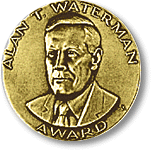
Jennifer Doudna wins Waterman Award
"The National Science Foundation (NSF) has chosen a Yale University professor of molecular biophysics and biochemistry [and CHESS user] to receive its most prestigious prize for young researchers. Jennifer A. Doudna will be honored with the 2000 Alan T. Waterman Award at a National Science Board awards ceremony on May 3 in Washington, D.C. ...Doudna's leading work in structural biology provided an answer to how RNA can act like an enzyme to catalyze specific biochemical reactions, and how polyanionic RNA forms a three-dimensional structure."
_______________________________________________
Ada Yonath wins First European Crystallography Award
"The European Crystallographic Association is to award the first European Crystallography Prize to Professor Ada Yonath of the Weizmann Institute of Science Rehovoth, Israel and the Max-Planck Research Unit for Ribosomal Research, DESY, Hamburg, Germany. Professor Yonath is being recognized for her pioneering achievements in structural studies on the ribosome, the universal cellular organelle on which protein biosynthesis takes place."
_______________________________________________

Structure of Reovirus Core Determined Via X-ray Crystallography
Reoviruses infect the respiratory and intestinal tracts of mammals and birds. Although infections seldom cause disease, reoviruses are related to other more serious viruses. The family reoviridae includes a large number of double-stranded RNA viruses infecting vertebrates, invertebrates, and plants.
_______________________________________________

Hyperactive 'Switch' Causes Malignant Cell Growth
Cancer researchers have made a structural map of cellular switches called Cdc42 complexed with GDI(guanine nucleotide-dissociation inhibitor). The structural mapping was obtained with x-ray crystallographic methods from data collected with MacCHESS resources at CHESS. MacCHESS, a NIH supported resource, builds and operates the specialized x-ray detectors and cameras needed to collect the data from crystals grown of this complex.
_______________________________________________

Studying Dense Materials by High Pressure X-ray Diffraction
Zirconium dioxide and hafnium dioxides quenched at room conditions from high pressure have yielded ultra dense, low compressibility crystalline forms of matter. These materials are of interest for their potentially large hardness (resistance to deformation). The x-ray measurements below complement the optical, electrical, and transport properties measured in the home laboratory to give a more complete picture about the properties that describe these unusual materials.
_______________________________________________

Next Generation PAD X-ray Detector Produces First Images
Over the past decade electronic area detectors have brought entirely new capabilities and efficiencies to x-ray science and have had a revolutionary impact on biological studies. Prof. Sol Gruner’s group in the Cornell Physics Department is developing a new generation of large area electronic Pixel Array Detectors (PADs) for use at CHESS and other synchrotron sources.
_______________________________________________

Roderick MacKinnon wins Lasker Award for MacCHESS/CHESS Work on Potassium Channels
Roderick MacKinnon, MD, a professor at Rockefeller University and an investigator at the Howard Hughes Medical Institute is a winner of a 1999 Albert Lasker award in basic medical research. The citation reads "For elucidating the functional and structural architecture of ion channel proteins, which govern the electrical potential of membranes throughout nature, thereby generating nerve impulses, and controlling muscle contraction, cardiac rhythm, and hormone secretion."
_______________________________________________
Motivated by a growing need for more x-ray beamtime on the Cornell campus and a dedicated facility for materials growth studies, a group of five Cornell faculty proposed adding three new experimental x-ray stations onto the Cornell storage ring. They sought and secured $3.0M from Cornell University to build the necessary laboratory space and $2.5M from the National Science Foundation to design, build and instrument the beamlines and optics.
_______________________________________________
NIGMS Funds Upgrade to Macromolecular Crystallography Beamlines
The CHESS wiggler stations have
certainly been among the most, if not the most
productive macromolecular beamlines in existence. For
more than a decade MacCHESS and CHESS have pioneered
many aspects of modern protein crystallography at
storage rings and have helped catalyze the present
biostructure revolution.
_______________________________________________
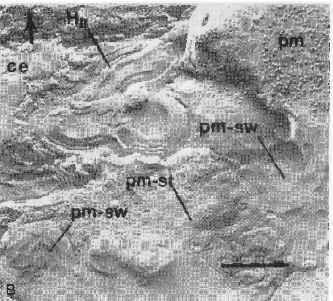
Explanation of Freezing Tolerance in Select Plant Tissues
The ability to endure low temperatures and freezing is a major determinant of the geographical distribution and productivity of agricultural crops. Even in areas considered suitable for the cultivation of a given species, decreases in yields and crop failure frequently occur as a result of aberrant freezing temperatures.
_______________________________________________

Study of CDK Eukaryotic Cell Division Machinery
The growth of the human cell is controlled by a set of proteins that act as molecular switches. These switches are turned on or off by several other proteins and ensure that the cell grows only when appropriate. In cancer, genetic alterations often cause the deregulation of these switches and lead to the uncontrolled growth of the cell.
_______________________________________________
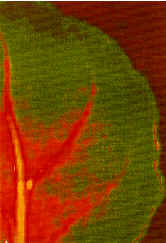
Amazing Plants Uptake Large Quantities of Toxic Metals
The existence of plant species that
can accumulate very high levels of heavy metals suggests
that the genetic potential exists to use terrestrial
plants to clean surface soils contaminated with toxic
metals.
_______________________________________________
Nanofabricated Flow Cell used to Study Fast Protein Folding
Many questions are now being asked about the dynamics of large protein molecules, including how they fold and move. The stability and folding speed of a protein depend on the structures of the denatured as well as the native state.
_______________________________________________

Water and Contaminant Transport in Soil
Accurate monitoring of flow instabilities, which can occur when water displaces non-aqueous phase liquids (NAPLs, eg. oil) in porous media, is an important component of predicting the transport and fate of these compounds in the subsurface. In particular, flow situations in which three separate phases (such as water, NAPL, and air) exist in the porous media have only begun to be studied.
_______________________________________________
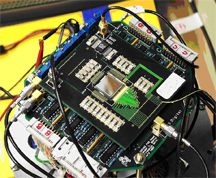
Next Generation of X-ray Area "Pixel Array Detector" Passes Beamline Tests
Over the past decade electronic area detectors have brought entirely new capabilities and efficiencies to x-ray science and have had a revolutionary impact on biological studies. A joint collaboration between the Biophysics Group in the Cornell Physics Department lead by Prof. Sol Gruner and CHESS is developing a new generation of large area electronic detectors called Pixel Array Detectors (PADs).
_______________________________________________
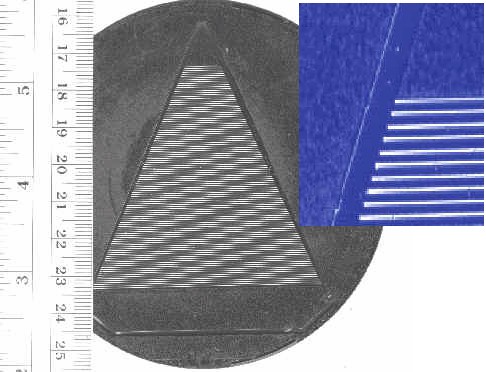
Nanofabrication Techniques used to Make New X-ray Crystals
CHESS, always at the cutting edge of
innovation in x-ray optics, has begun exploiting
resources at the Cornell Nanofabrication Laboratory to
develop a new generation of focusing elements. The work
adapts micro-electro-mechanical system (MEMS)
fabrication techniques to reduce the size of structures
in silicon used to collect, diffract, and focus x-ray
beams.
